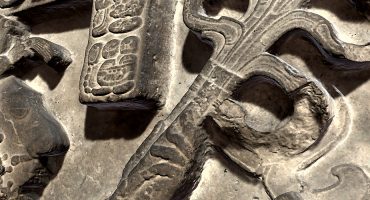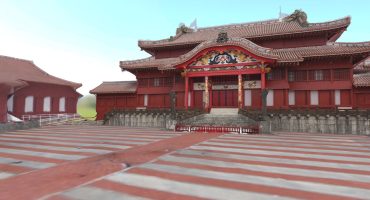Dr Hugo Anderson-Whymark explains how he’s brought a collection of of Neolithic carved stone balls to life in 3D. This post was first published on the National Museums Scotland blog on June 6, 2018.
Carved stone balls are one of Scotland’s most enigmatic prehistoric artefacts. Created some 5000 years ago in the Late Neolithic, their distinctive knobbed forms were carefully pecked and ground to shape by communities across the north east of Scotland. A small number, such as the Towie Ball, were elaborately incised with circles and spirals and represent some of the finest examples of Neolithic ‘passage grave’ art in Europe.
Yet we still don’t know how carved stone balls were used; in the words of archaeologists Stuart Piggott and Glyn Daniel (1951) ‘their use is wholly unknown’. It has long been postulated that they were weapons – mounted as maceheads or bound with sinew or twine and thrown like South American bolas. But other authors have suggested they were used as weights, measures, mnemonic devices or symbols of power; some mathematicians have even viewed them as representations of platonic solids. It’s easy to see why these artefacts have captured the imagination for more than two centuries.
Around 525 carved stone balls are known, the vast majority being from Scotland, with rare finds from England, Ireland and one example from Norway. National Museums Scotland holds the largest collection of carved stone balls in the world, with some 140 originals and casts of a further 60 examples from other collections. Some of our finest carved stone balls are on display in the Early People gallery, but as these artefacts are so popular we have decided to bring 60 of our carved stone balls to you as 3d models via our Sketchfab account. These examples represent a broad cross-section of the different known forms and raw materials in our collections; from three to six knobbed stones in granite, to sandstone examples covered in numerous rounded projections. The latter infamously described by Sir John Evans in his book Ancient Stone Implements (1897) as resembling ‘enormous petrified mulberries’.
Carved stone balls by National Museums Scotland on Sketchfab
These models were made using photogrammetry, which uses around 150-200 images of each artifact to produce an exceptionally high-resolution 3D model. The resolution allows you to examine and appreciate these artifacts in unprecedented detail. Indeed, the model of one carved stone ball (X.AS 90) revealed traces of fine concentric circles on one projecting knob that had never been recorded before, despite the artifact having been in the museum for more than 100 years and examined by dozens of scholars. Traces of decoration and working are particularly clear in ‘matcap’ mode, which makes the artifact look like shiny metal, emphasising any irregularities in the surface.
Sharing these models on Sketchfab allows you explore these wonderful artifacts in 3d and Virtual Reality from the comfort of your own home, anywhere in the world. Enjoy!
This blog post was originally published by National Museums Scotland.
Thanks Hugo! For more amazing 3D models, be sure to check out and follow National Museums Scotland and Dr Hugo Anderson Whymark on Sketchfab.



